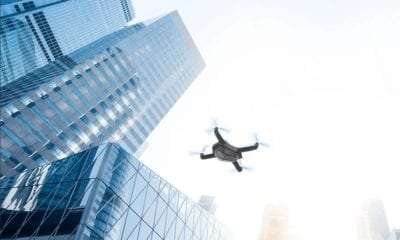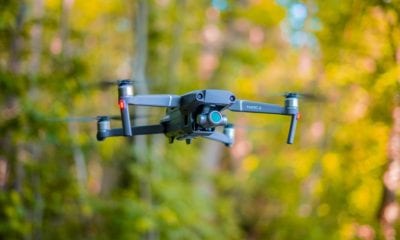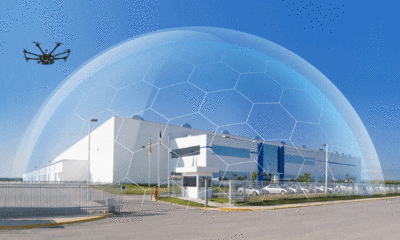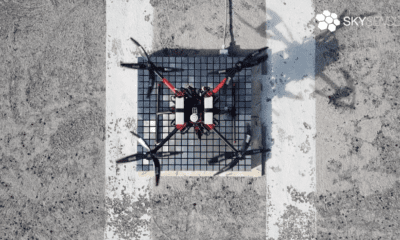
Energy & Utilities
Drones for Fault Detection in Power Lines
Drones for Fault Detection in Power Lines
Power plants are could be termed the foundation of our modern cities. The power transmission lines are the link between power plants and the points of consumption, through substations. Most importantly, the assessment of damaged aerial power lines and rusted conductors is of extreme importance for public safety; hence, power lines and associated components must be periodically inspected to ensure a continuous supply and to identify any fault and defect.

A sample of common defects: (A) missing plate along the insulator chain; (B) missing plate along the (rusted) insulator chain; (C) damaged strand of the cable; (D) hanging point, damaged by rust; (E) cable joints, which are more frequently affected by hot spots; (F) a chain of insulators, rusted.
There is maintenance and repair process in place for electrical equipment termed as preventive maintenance. Damages in transmission lines could be anything from broken cables or damaged insulators to conductor corrosion and vibration damage. Several methods have been employed to detect and analyze these anomalies.
Unmanned Aerial Vehicles (UAVs) provide a safe way to bring sensors close to the power transmission lines and their associated components without halting the equipment during the inspection and reduce operational cost and risk too.

The scheme of the object detection and classification pipeline, applied to insulators.
In a recent work, researchers monitored electrical infrastructure using a drone equipped with multi-modal sensors to capture images in the visible and infrared domain and transmit them to the ground station. The team demonstrated their approach on data captured by a drone in Parma, Italy.

(a) Color map of IR image with semi-cluttered background, (b) Obtained hot spot in the power lines. After detecting power lines from visible image, histogram based thresholding on the registered IR image gives expected faults.
The researchers presented, algorithms and methods developed for improving the capabilities of UAV-based inspection systems with primary focus on temperature anomalies along cables, and on insulators hanging from electric towers. In this work the researchers carried out the detection of hot spots and rusted insulators from sequences of images acquired by a drone surveying the electrical infrastructure. They utilized visible images to extract power lines and rusted insulators, and IR images relayed by the drone to identify hot spots in the processing pipeline. Methods were developed to classify insulators from a drone’s optical video stream and to detect hot spots along with the power lines from visible and infrared images.
State-of-the-art computer vision methods were used to highlight expected faults (i.e., hot spots) or damaged components of the electrical infrastructure (i.e., damaged insulators). Infrared imaging, which is invariant to large scale and illumination changes in the real operating environment, supported the identification of faults in power transmission lines; while a neural network is adapted and trained to detect and classify insulators from an optical video stream. To inspect temperature anomalies, the team performed multi-modal imaging integrating IR and visible data to identify faults and anomalies in power equipment. For insulators, researchers used recursive CNN (Convolutional Neural Networks) to detect insulators in visible images and to classify their status. The team published a paper describing the different approaches used to detect and classify insulators, and to analyse power transmission lines with details about the experimentation and the results achieved.
Discussion and Conclusions: Results from the study were computed with different statistical parameters by comparing the performance of obtained output with the manual ground truth. With an average of 0.98 similarity index, and 0.95 Dice similarity coefficient, in different background conditions, the method results proved effective for the detection of power lines.
The results showed that the use of multi-modal imaging and of convolutional networks may improve the efficiency of drone surveying of the electrical infrastructure, and may open the way to the development of a novel monitoring payload (to be embedded in UAV) able to provide accurate and fast detection of faults and anomalies in power lines and insulators.
The research team included Bushra Jalil, Giuseppe Riccardo Leone, Massimo Martinelli, Davide Moroni, Maria Antonietta Pascali and Andrea Berton with support from Istituto di Scienza e Tecnologie dell’Informazione “Alessandro Faedo” and the Istituto di Fisiologia Clinica CNR, in Pisa, Italy.
Citation: Fault Detection in Power Equipment via an Unmanned Aerial System Using Multi Modal Data, Bushra Jalil, Giuseppe Riccardo Leone, Massimo Martinelli, Davide Moroni, Maria Antonietta Pascali, and Andrea Berton, Sensors 2019, 19(13), 3014; https://doi.org/10.3390/s19133014, https://www.mdpi.com/1424-8220/19/13/3014/htm
























